The threat of domestic terrorism, particularly from the far right, nearly matches that of jihadist terrorism in the United States, yet receives far less attention. Daniel Byman explores the implications if the U.S. government were to adopt its foreign counterterrorism policies against this domestic challenge. This piece originally appeared on Foreign Affairs.
The mass shooting in Las Vegas on Sunday night has again raised fears about terrorism. There’s much we don’t yet know. The Islamic State (ISIS) has claimed the attack, but the FBI claims that there is no international terrorism link. The attacker, Stephen Paddock, was 64 years old and white, fitting a stereotype of a right-wing terrorist more than a jihadist one. And he may just be a crazy nut. But regardless of Paddock’s particular pathology, the situation highlights how the United States treats similar forms of violence differently depending on the nature of the perpetrator.
Almost two months before, on August 12, 2017, James Alex Fields Jr. drove his car into a crowd of peaceful demonstrators in Charlottesville, killing Heather Heyer, one of the demonstrators. Heyer’s death came after a day of demonstrations in which armed neo-Nazis and Klansmen, including Fields, who bore the symbols of Vanguard America (a white supremacist, neo-Nazi organization), marched ostensibly to protest the removal of a statue of Confederate Civil War hero Robert E. Lee but really to trumpet their hateful ideas.
Fields’ act was treated as the crime it was: he was charged with second-degree murder and hit-and-run, along with several crimes related to the injuries of other victims. Yet given the political nature of the violence, and given the power of terrorism as a label, many have called for treating Heyer’s death as terrorism. Indeed, Fields’ use of a car to drive through a crowd resembles nothing more than the vehicle attacks that we’ve seen in Barcelona, Berlin, London, Nice, and other cities in the past two years. In turn, U.S. Attorney General Jeff Sessions labeled Field’s attack “domestic terrorism,” which federal law defines as trying to intimidate a civilian population or affect government policy through violence in an area of U.S. territorial jurisdiction.
Fields’ attack is not the first time right-wing violence has raised questions about the terrorism label. After the 2015 attacks on a Planned Parenthood Clinic and a black church in Charleston, demands to treat right-wing violence as terrorism were loud. A December 2015 YouGov poll found that 52 percent of Americans thought the Planned Parenthood attack was terrorism, and civil rights activists widely criticized the fact that few media outlets were calling Dylann Roof, the perpetrator of the Charleston massacre, a terrorist.
Words matter, but deeds matter more. It is all well and good to label left- and right-wing violence at home as terrorism, but what if the U.S. government went beyond rhetoric and truly treated these groups as it treats Americans suspected of being involved with jihadist organizations like ISIS?
The differences would be profound. Not only would the resources that law enforcement devotes to nonjihadist groups soar, but so too would the means of countering those groups. The legal toolkit would grow dramatically. Perhaps as important would be the indirect effects: banks, Internet companies, and other organizations vital to any group’s success would shy away from anything smacking of domestic terrorism. Nonviolent groups that share some of the radicals’ agenda would also face pressure, and many would feel compelled to change, often in ways that go against U.S. ideals of free speech and free assembly.
Taken to its logical conclusion, this thought experiment makes clear that treating domestic extremism just like foreign terrorism would be a mistake, but moving a bit in that direction would be desirable. Federal law enforcement in the United States should have the legal authority to take on more responsibility for addressing domestic terrorism. However, given the power of many terrorism-related laws and the political connotations, the terrorism label should be used sparingly, and the new authorities should be tightly defined and monitored.
Independent of greater federal legal authority, the resources allocated to countering domestic terrorism in general and right-wing violence in particular should increase given the danger these groups pose. Counterterrorism and law enforcement officials should also focus on the violent elements within radical groups, using the law to move them away from the line that separates legitimate (if deplorable) protest and violence. In addition, officials should use the law more aggressively to stop potentially violent situations, such as when armed protestors show up at a legitimate march. Finally, legitimate mainstream groups that share part of the radicals’ agenda have a responsibility to report suspects and otherwise police their ranks—just as the United States expects other communities, like American Muslims, to do.
Treating domestic extremism just like foreign terrorism would be a mistake, but moving a bit in that direction would be desirable.
WHAT DOES IT MEAN TO BE A TERRORIST?
Although many definitions of terrorism exist, the most prominent make little differentiation between violent individuals like Fields and jihadists who pledge their allegiance to ISIS. However, both the political baggage that comes with the terrorism label and American public perceptions make it far easier to use the t-word when discussing foreign groups than when describing domestic ones.
Bruce Hoffman, one of the world’s foremost experts on terrorism, defines terrorism as organized political violence (or the threat of it) by a substate group with a goal of having a broader psychological impact.
U.S. government definitions follow a similar logic. The State Department contends that terrorism is “the unlawful use of force and violence against persons or property to intimidate or coerce a government, the civilian population, or any segment thereof, in furtherance of political or social objectives.” Whether aiming to kill non-Muslims or non-whites is not relevant—it is the nature of the act, not the particular agenda behind it, that matters.
With images of 9/11 dominating the thinking on terrorism, some might dismiss white supremacist and like-minded violence as a lesser threat unworthy of the terrorism label, but in post-9/11 United States, non-jihadist terrorists are as dangerous as jihadists. Although the right-wing category encompasses many disparate groups—including white nationalists, neo-Nazis, neo-Confederates, Sovereign Citizens, anti-abortion zealots, anti-Muslim and anti-immigrant groups, Christian Identity believers, and related fanatics—they collectively form a serious threat to Americans.
Since 9/11, right-wing groups killed 68 people compared to 95 for jihadist groups; the jihadist figure would be more than halved (and lower than right-wing murders) if the 2015 shooting of 49 people at a gay night club in Orlando were excluded. The year 2016 was the bloodiest year for domestic extremists since 1995, when the right-wing radical Timothy McVeigh killed 168 people when he bombed a federal building in Oklahoma City. Since the election as president of Donald Trump, right-wing violence has soared. In the 34 days following the vote, the Southern Poverty Law Center documented 1,094 bias related incidents, and 37 percent of incidents involved Trump or his campaign slogans. (If the Las Vegas attack is determined to be done by a terrorist group that will have a big impact on the overall numbers.)
What about the political impact of domestic terrorism? We often evoke the days after September 11 as a time of national unity in the face of horror. But left- and especially right-wing violence is driving us apart. On the left, the killing is minimal, but images of Antifa and other violence is used to bolster the perception that Trump’s opponents are extreme and committed to stopping legitimate speech and protest. The impact is far greater on the right because of the scope and scale of the violence. Rightwing violence is usually in the name of a cause—racism, anti-abortion, gun rights, opposition to migrants, and so on—that at least some Americans support, even if the more mainstream groups vehemently reject violence. Over 15 percent of Americans believe that abortion should be illegal in all cases, for example. But very few have ever taken up arms in support of that cause. In 2016 polls, meanwhile, most white people believed that anti-white bias was a bigger problem than anti-black bias, despite outcomes for white Americans exceeding those of black Americans on almost every metric. Violent white supremacists thus poke at bigger political wounds than do jihadists, with many Americans sympathizing for the cause but rejecting the killing.
That problem is compounded by the fact that Americans are much more comfortable calling some types of political violence “terrorism” than others because the terrorism label carries normative weight. It suggests that boththe person’s actions and cause is beyond the pale. The definitions and laws above are all about actions, not the ideology behind it, but most non-experts lump the two together. As terrorism analyst Brian Jenkins observed many years ago, “terrorism is what the bad guys do.”
There are also the legal complications to contend with. Although the United States does have a federal definition of domestic terrorism, domestic terrorism is not an independent federal crime. The U.S. State Department maintains a list of “Foreign Terrorist Organizations,” and this list is necessary so law enforcement, businesses, and ordinary citizens can know which groups are illicit even if they agree with the cause as a whole. To treat domestic terrorism like international terrorism, the United States would need a separate “Domestic Terrorist Organization” list, presumably compiled by the Department of Homeland Security and the Federal Bureau of Investigation with input from other agencies. Who is on that list would be tricky, though, as many “radical” activities such as encouraging hateful beliefs are protected free speech. Also, the government would have to disentangle the domestic and foreign lists if there are groups at home that have no real foreign links but are fanboys of foreign groups such as ISIS. Making this more complex, some states do have domestic terrorism laws. Alabama, Arizona, and New York have prosecuted ISIS cases as state terror cases because the feds either didn’t want to or didn’t have enough evidence.
Even if the United States developed a federal statute, there is no immediate legal reason to use a terrorism charge unless other legal means do not offer sufficient prosecutorial power, resources, or other advantages. In general, the U.S. system gives the states, not the federal government, responsibility for punishing violent crimes. There is no general federal murder statute, for example. To qualify as federal, the issue must be a national one, requiring cross-state authority and federal resources. For example, when a U.S. citizen abroad might be a victim of terrorism, the FBI investigates.
In addition, several laws enable the federal government to play a role in terrorism-like cases without calling it terrorism. The Fair Access to Clinic Entrances Act, for example, gives the FBI some responsibility for securing abortion clinics, enabling them to investigate potential threats. Federal hate crime statutes can be invoked against violent white supremacists. These laws can be as tough as anything we’d see if terrorism were made a crime, with some carrying the federal death penalty. Dylan Roof, who murdered nine black churchgoers in Charleston, South Carolina in 2015 was convicted of 33 federal charges, including hate crimes, but not terrorism. Nevertheless, he is on death row.
NEW RULES
What if the United States changed the rules anyway? Treating domestic groups the way we do American individuals tied to designated foreign groups would make a profound difference. Consider, notionally, an individual suspected of ties to ISIS and one suspected of ties to the National Socialist Movement, the organization of American Nazis, (or, if it suits your predilections, say Antifa). In addition to action against ISIS abroad, the response to the ISIS suspect at home would be characterized by a mix of the following:
First, there would be early action and monitoring. The government would move quickly to address the terrorism threat. Depending on the opinion of the Department of Justice and FBI, a confidential informant might be used to befriend the suspect and gather evidence. A gentler approach might be a knock on the door by local law enforcement, working closely with federal officials, to assess the situation or possibly an attempt to work with relatives and community leaders to move the individual away from violence.
Second, there would be far more resources. The anti-ISIS counterterrorism budget is robust. Much of the funding goes to intelligence, including electronic surveillance, human sources, and other means. As of 2016, the United States had spent $6.2 billion in the fight against ISIS, and the Trump administration’s budget proposal requested another $2 billion flexible fund for fighting the group.
There is no neo-Nazi or Klan proto-state comparable to what ISIS has carved out in Iraq and Syria, and thus no need for expensive air and ground operations or satellite intelligence on suspected facilities. However, the numbers above are roughly the same as the FBI’s entire budget, which includes cyber defense, white collar crime, and other concerns. Of the small slice of the FBI budget that goes to counterterrorism, a tiny portion specifically goes to activities focused on right-wing extremist organizations. Indeed, domestic terrorism gets normalized into the FBI’s, DHS’, and the Department of Justice’s regular budgets in part because many of the tools used to address domestic terrorism closely resemble what is done in the name of “ordinary” law enforcement.
Violent white supremacists thus poke at bigger political wounds than do jihadists, with many Americans sympathizing for the cause but rejecting the killing.
Third, there would be no tolerance for violence. When the individual seemed to be acquiring firearms, let alone materials for a bomb, law enforcement officials would swoop in. It is hard to imagine concerns about First Amendment rights leading the government to allow a group of armed protestors to march through a town chanting slogans extolling the virtues of shari’a.
Fourth, treating domestic extremist violence like ISIS-linked terrorism would open up broad use of the power of the law. The statutes about providing material support for terrorism are incredibly powerful, enabling prosecutors to nab suspected terrorists for even limited support, including simply joining a group (and thus giving one’s own person to the cause). According to the Center on National Security at Fordham Law, in 2016, 80 percent of ISIS-related prosecutions involved a material support charge. Suspected jihadists are often convicted of lesser charges just to get them off the streets.
For terrorists without a foreign link, the rules are different. Fewer law enforcement resources coupled with a cautious government response out of fear of violating First and Second Amendment rights offers domestic terrorist groups more space to operate, organize, and preach without heavy surveillance or government interference. The United States does not have an existing infrastructure for preemptive disruption, like with the anti-ISIS campaign, and the law is applied more carefully than it is with regard to suspected jihadists. The FBI and other U.S. government organizations do try to preempt right-wing as well as jihadist attacks at home, of course. For ISIS, however, a few tweets may be enough to get the FBI to act; the bar for non-jihadist organizations is much higher.
In short, a change in domestic terrorism policy would result in huge legal and political shifts. If right-wing and the smaller left-wing groups received similar attention as jihadists, the halls of the FBI and DHS would be bursting with new employees. Intelligence penetration of the right-wing community (and any relevant left-wing groups) would soar. This would range from monitoring phones and electronic communications of individuals with possible links to terrorists to planting informers in right-wing radical groups, regular police check-ins with leaders of legitimate right-wing causes to encourage them to provide information on potentially violent members, and trying to “turn” current group members to inform on their comrades. The public social media accounts of potential radicals would also be scrutinized. Affected communities would hate this. Many American Muslims believe that U.S. counterterrorism programs single out Muslims unfairly, and expanding the use of informants and surveillance would increase the numbers under the microscope.
Because of the greater intelligence coverage—and lower regard for the privacy of the affected citizens —the amount of information on right-wing groups and individuals would skyrocket. Using link-analysis software, metadata, and greater information gathering, the government would know not only suspected right-wing terrorists, but also their friends, family members, and other parts of their network. The amount of analysis of groups, causes, and individuals would also grow exponentially. The expansion would seek to uncover heretofore unknown connections and otherwise anticipate and disrupt problems before they manifest.
Informants would play a particularly large role. With suspected jihadists, the FBI often uses undercover agents and informants who claim to be members of a foreign terrorist organization. They engage individuals they feel have radical ideas and then encourage them to take prosecutable actions. A man named Antonio Martinez, for example, posted messages endorsing violent jihad on Facebook. An FBI informant then began to interact with Martinez posing as a jihadist. The agent gave him a fake bomb, which Martinez then tried to set off. Sting operations are used on right-wing groups, but far less frequently. If we treated right-wing radicals as we do jihadists, government officials would scan
Facebook for individuals posting messages embracing violence against Jews or African Americans and then providing them with fake bombs in order to prosecute them. Social media sites contain a staggering number of anti-Semitic and racist threats, and the FBI would have its hands full. Given the politicized nature of America today, if an administration focused largely on right or left-wing groups, it would be accused of suppressing opposition, not fighting terrorism
Past experience is useful. In the early 1990s, the FBI conducted the PATCON (Patriot Conspiracy) program. FBI agents posed as members of a fictional right-wing extremist group and collected information on real like-minded groups by attending conventions and other gatherings as well as reporting on private conversations. Analyst J.M. Berger found that the investigation produced little that could be used for criminal prosecution because it did not meet a high evidentiary bar, but it did provoke paranoia in the groups being monitored, with some members being removed as suspected spies. It’s hard to feel sorry for these individuals, but the result—that individuals not guilty of any crime found it harder to exercise freedom of assembly and speech—should trouble everyone.
The counterterrorism microscope would also reveal numerous minor but prosecutable offenses not related to terrorism. As investor guru Warren Buffett noted, “If a cop follows you for 500 miles, you’re going to get a ticket.” Arresting such individuals would send a message that the police were watching. Credit card fraud, drug use, and other minor crimes would serve as justification to arrest and disrupt suspected terrorists and as leverage to convince them to cooperate in other investigations of their associates. Indeed, the government at times does not pursue criminal charges if the offense is deemed minor or resources are needed elsewhere, but this would be far less likely if there was a perceived terrorism link. For example, Virginia allows its residents to openly carry a firearm. However, the law stipulates that a non-Virginian from a state where open carry is illegal cannot carry a firearm— a seemingly obscure technicality. Police, however, did not check to make sure all the marchers in Charlottesville—many of which were from other states—met this criterion. (Part of the reason was that the protesters were better armed than the police.) If the marchers were perceived as having potential ties to designated terrorist groups, then law enforcement would likely take extra precautions to ensure they abide by the law – and to have more firepower at hand. Using such a standard would allow protest, but it would make it harder for at least some participants to do so while armed.
Another change would be that government lawyers would use the material support laws to go after domestic terrorists. Under the material support statue, providing money, weapons, or even a person’s time to a designated terrorist group is a felony. Civil rights advocates have criticized the scope and breadth of these laws for years. In 2011, David Cole, now the National Legal Director for the ACLU, argued that the laws even create risk for nongovernmental organizations that might advise designated terrorist groups on how to begin peace negotiations to end conflict.
Causes linked to domestic terrorist groups domestic would have to eliminate any ambiguity in their actions for fear it could result in their arrest or be used against them in court.
For those linked to a group but not convicted of any crime, the consequences could still be dire and should trouble many Americans. In 2011, the FBI declared all Juggalos, the fans of the hip-hop group Insane Clown Posse, which has both violent and nonviolent members, to be a criminal street gang. The designation means that some Juggalos and Juggalettes (female fans) have lost custody battles, jobs, and otherwise suffered as their employers and the courts treated them as gang members. Juggalos staged several protests against the FBI designation and many describe its effects as discrimination.
Beyond changing the groups and those pursuing them, treating right-wing violence as terrorism would affect the broader community that might sympathize with the cause but not the violence. Doing business with a declared terrorist organization would create legal liability and would damage a firm’s reputation, which every financial institution would seek to avoid. A U.S. bank, for example, held up money going from a legitimate U.S. charity to provide supplies for hospitals in Syria in order to ensure that the money did not end up the hands of terrorists. One can imagine legitimate charities operating in poor areas with a large Klan or Sovereign Citizen presence facing financial problems because banks fear the money could end up in the wrong hands.
The government would also try to shut down the virtual presence of suspected terrorists. After the killing in Charlottesville, GoDaddy, a website hosting company, refused to allow the American neo-Nazi news and commentary site The Daily Stormer to use its platform even though GoDaddy had hosted the site since 2013. When its webmasters went to Google for hosting, they were also turned down. Facebook banned links to the site on its platform. Rather than drawing on the law to justify their actions, these sites said that The Daily Stormer violated their terms of service because it could incite violence. Government scrutiny would make far more companies willing to purge themselves of anything that could be linked to terrorism and eager to create service terms that enable them to do so. Although these companies already take steps to mitigate extremism—Facebook recently announced an initiative to use more artificial intelligence to screen content for extremist material—they would have to apply those steps to the specific needs of right and left-wing extremism if there was a change to the law. Suspected domestic terrorists would be treated similar to suspected child pornographers: if companies had any doubt, they would shun the group.
Counter-messaging programs—just say no to jihad—would be far more robust, targeting the community in the hopes of reducing support for radicals within it. The Obama administration funded these poorly, and the Trump administration appears even more skeptical. The Department of Homeland Security gives out $10 million each year in Countering Violent Extremism Grants to organizations that work to develop resilience to extremism. Under the Trump administration, the program has focused almost wholly on jihadism. But similar programs to target non-jihadist domestic extremism would logically follow a change to the laws although, of course, it remains politically easier to focus on jihadists, which both the right and left agree are dangerous, than extremists on either end of the U.S. political spectrum.
Nonviolent groups that share part of the radicals’ agenda would also be viewed differently. Many
Sovereign Citizens share the NRA’s pro-gun agenda; eco-terrorists’ goals overlap with those of the Sierra Club. Today, such nonviolent political mobilization is not just protected under freedom of speech and freedom of assembly: it is considered vital to democracy, which requires citizens to express their views in the marketplace of ideas and to inform their elected officials. But with a change to the treatment of domestic terrorists, peaceful organizations might become considered “feeders” of the violent organizations. At the very least, they would be suspected of creating a conducive environment to radicalism. Saudi Arabia, for example, funds an array of mosques, textbooks, and extremist preachers for Muslim communities around the world and is often blamed when young men take up arms in the service of these ideas. Domestic nonviolent groups would have an incentive to distance themselves from violent individuals, with the added benefit of helping to make sure that extremists do not slip through the cracks by hiding among a more moderate cohort. This would have a chilling effect on organizations as many would avoid links to individuals who might have links to violence, however defined.
Any terrorist seizure of territory, meanwhile, would be viewed as particularly dangerous. When terrorists control territory, they can create training camps that indoctrinate new recruits and provide training on bomb-making, document forgery, assassination, and other dangerous tactics. In addition, controlling territory gives the group legitimacy and undermines the authority of the state. Even small safe houses are dangerous. In 2016, Ammon Bundy and several followers seized control of the headquarters building in the Malheur National Wildlife Refuge in Oregon, claiming that federal land should be turned over to the states to manage. The result was a siege that lasted more than a month, with the participants eventually being arrested—and one killed when he resisted. Under the new system, the radicals would still be given a chance to surrender, and if the police and FBI could arrest them without risk, they would do so. But the situation would not be allowed to persist for days, let alone weeks. In addition, if the danger were deemed high, then taking domestic terrorists out via snipers, drones, or other standoff means would be considered acceptable.
Finally, public perception would change. Using the terrorism label carries normative force and would change how these fringe groups are viewed. It would also indirectly shape causes seen as linked to a terrorist group. Before 9/11, a handful of Americans favored a government ruled under Islamic law; after 9/11, the number of supporters remains a handful, but fear concerning this issue became a major political issue in some states. In 2017 alone, 13 states have introduced anti-sharia legislation; Texas and Arkansas passed such laws. This public perception would give any government crackdowns legitimacy and, at the same time, put pressure on companies, local police departments, and others if they do not act decisively.
PROCEED WITH CAUTION
This thought exercise shows how profoundly things might change if the terrorism label were applied more broadly—and that’s probably why we should do so cautiously. Many of the current measures to fight domestic terrorists, such as arrests, work well. In addition, most Americans probably don’t want their government to be treating legitimate political movements with suspicion or making banks or Internet companies suppress free speech.
U.S. law enforcement, intelligence, and counter-messaging professionals should apply the law aggressively to prevent and disrupt violent activity while leaving individuals espousing the same ideas to protest in peace. History professor and former senior government official Philip Zelikow calls for shutting down groups that seek to create private militias—that is, the ones that are not “well-regulated” by the states. The Charlottesville marchers, for example, are more like an organized rival to the state rather than individuals acting on their own because they involve organizations with membership rolls, leaders, and even uniforms responding to a common call. This approach balances public safety concerns and First Amendment protections. This standard also works well for domestic Islamist groups, even if they champion ideas most Americans find objectionable.
If the non-jihadist terrorism problem continues to grow, the United States should also consider having a carefully worded domestic terrorism statute at the federal level along with an associated list of designated organizations. This would enable the federal government to step in more effectively, using its resources and legal power, if a group becomes a greater danger. Many of the measures described above would represent too much of a change, and any legislation should factor in counterterrorism measures we don’t want as well as ones we do. Suspicion of authority is at a high point, and even the perception that the government might abuse new powers could worsen this even more. The language should be tightly worded and subject to regular legislative oversight—the definition of a foreign terrorist organization is broad, and any domestic legislation should focus heavily on the threat or use of violence and be regularly reviewed to ensure that changes in group behavior are reflected.
Even without such a legislative change, the government must allocate an appropriate level of funding and manpower to domestic terrorism. The right-wing threat in particular is comparable to that of jihadist violence at home, and similar resources should be allocated to addressing it. The FBI and DHS should create larger offices dedicated to domestic groups and otherwise develop their intelligence presence. Some of the resources used for jihadist violence could be transferred with little loss.
Finally, Americans should recognize the responsibilities of nonviolent organizations that contain radical members or cross paths with them. Just as Muslim-Americans are a vital source of information on suspected ISIS supporters, so too should other mainstream communities and organizations feel compelled to point out the few troublemakers in their midst. Nonviolent pro-life advocacy groups should, for example, monitor comment threads on forums for indicators of violent activity. We want the line between violence and nonviolence to be bright, but this puts some moral onus on legitimate groups to police themselves rather than shrug off violence as the work of a few bad actors.
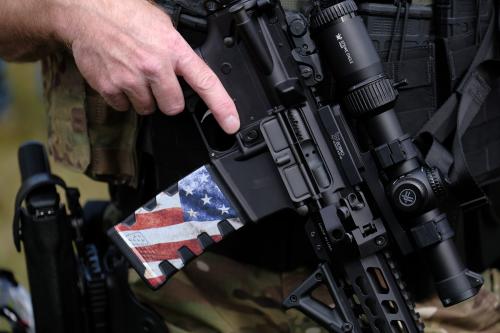
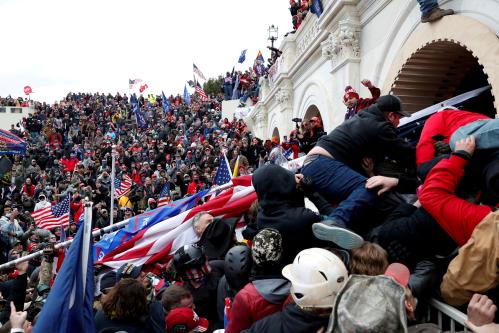
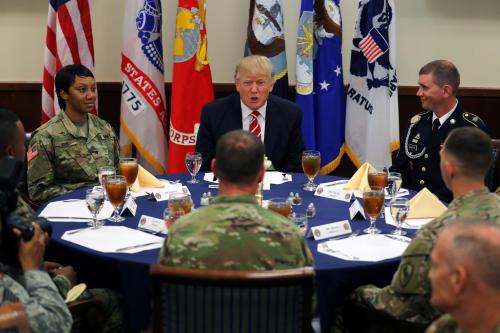

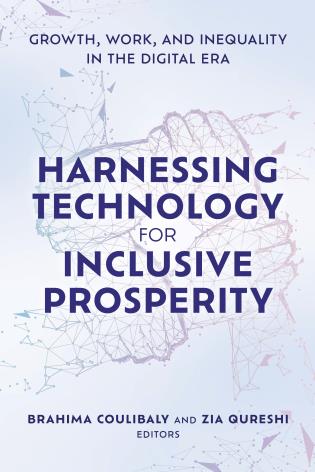
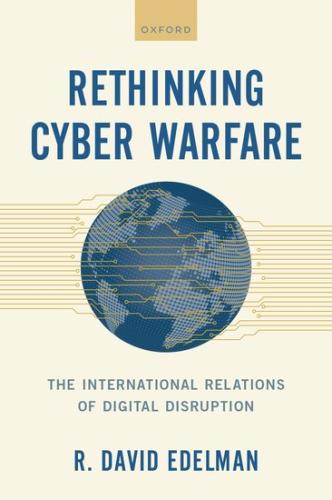

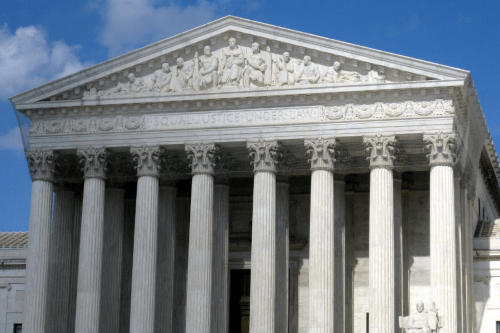

Commentary
Should we treat domestic terrorists the way we treat ISIS?: What works—and what doesn’t
October 3, 2017